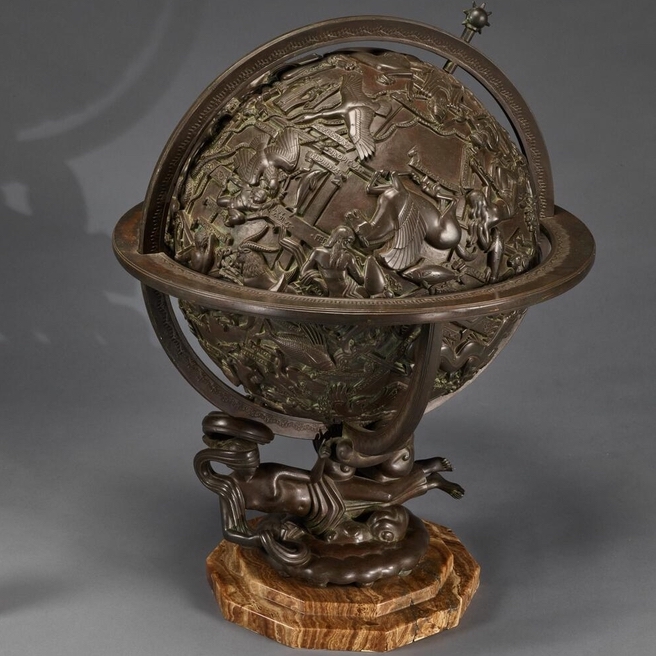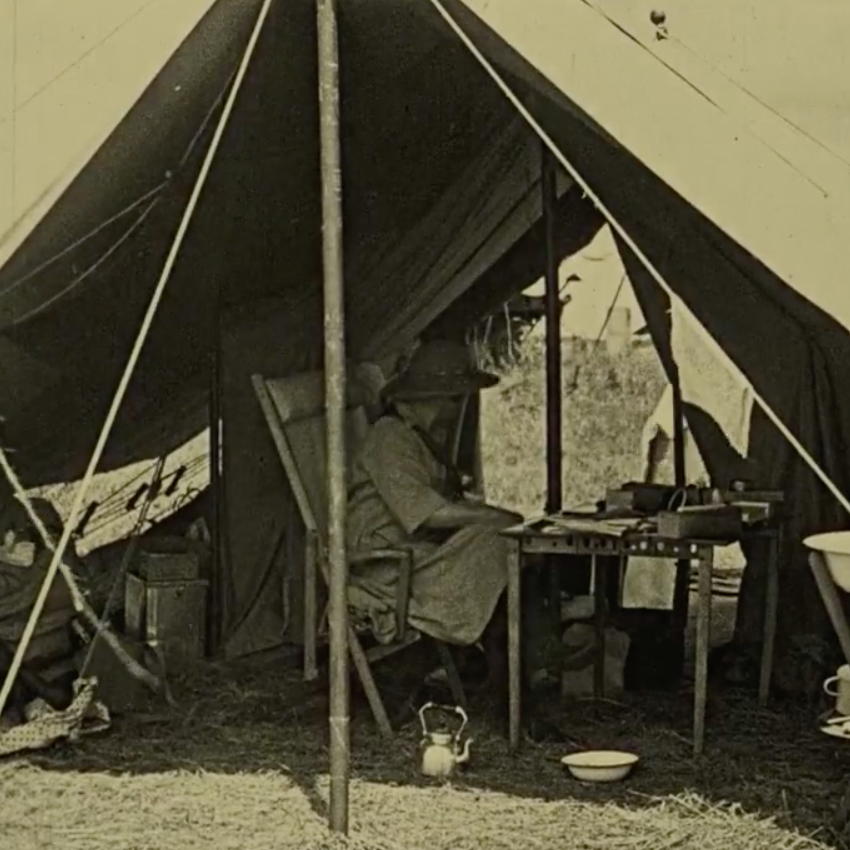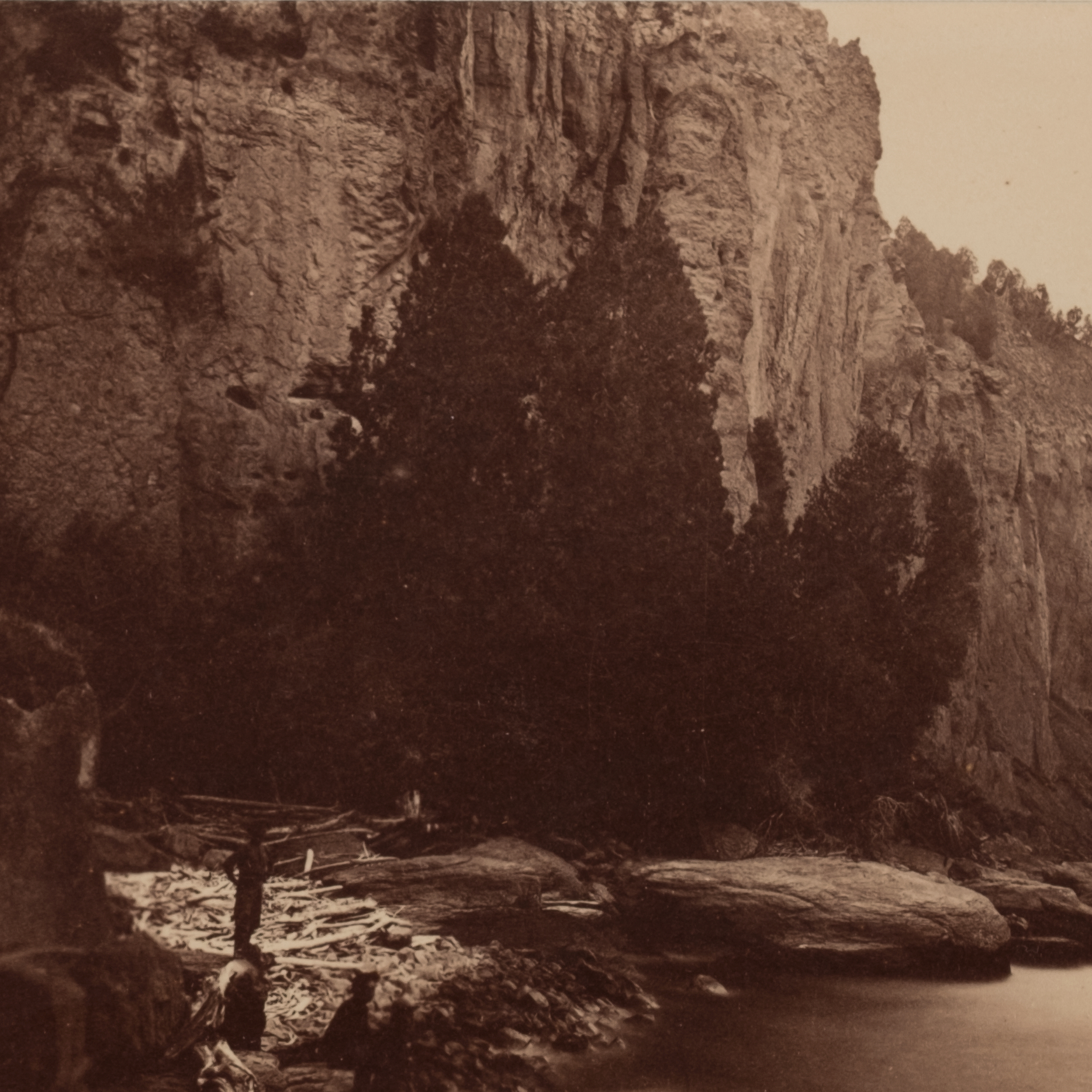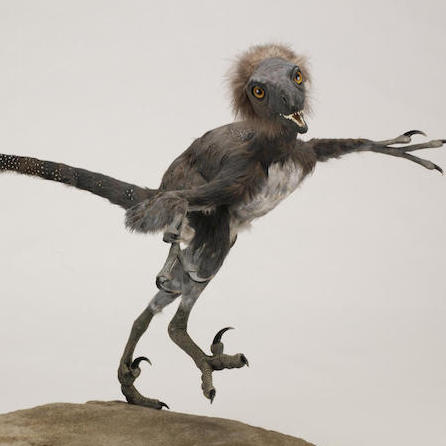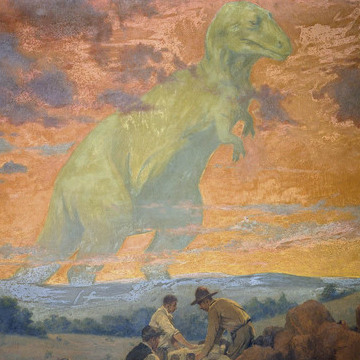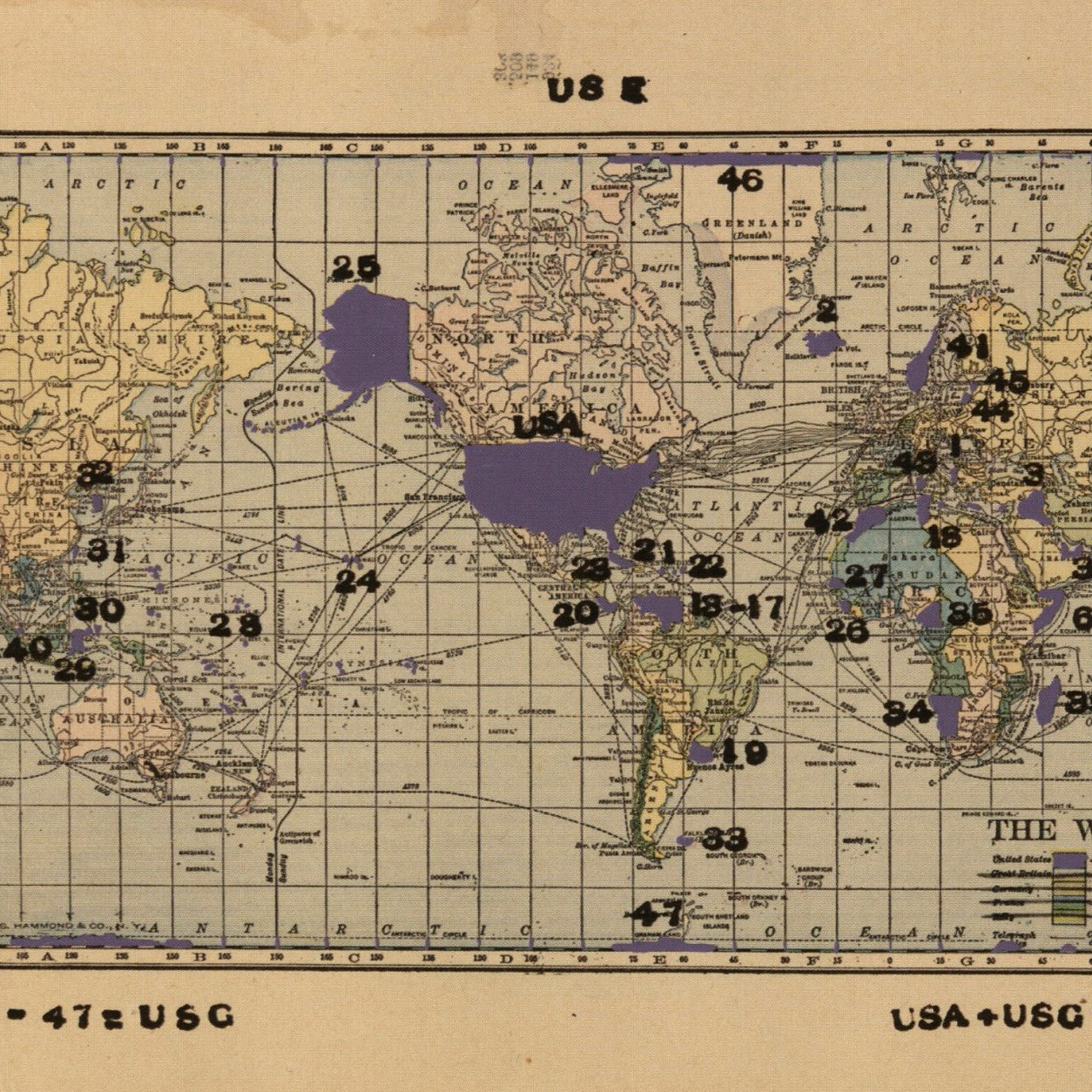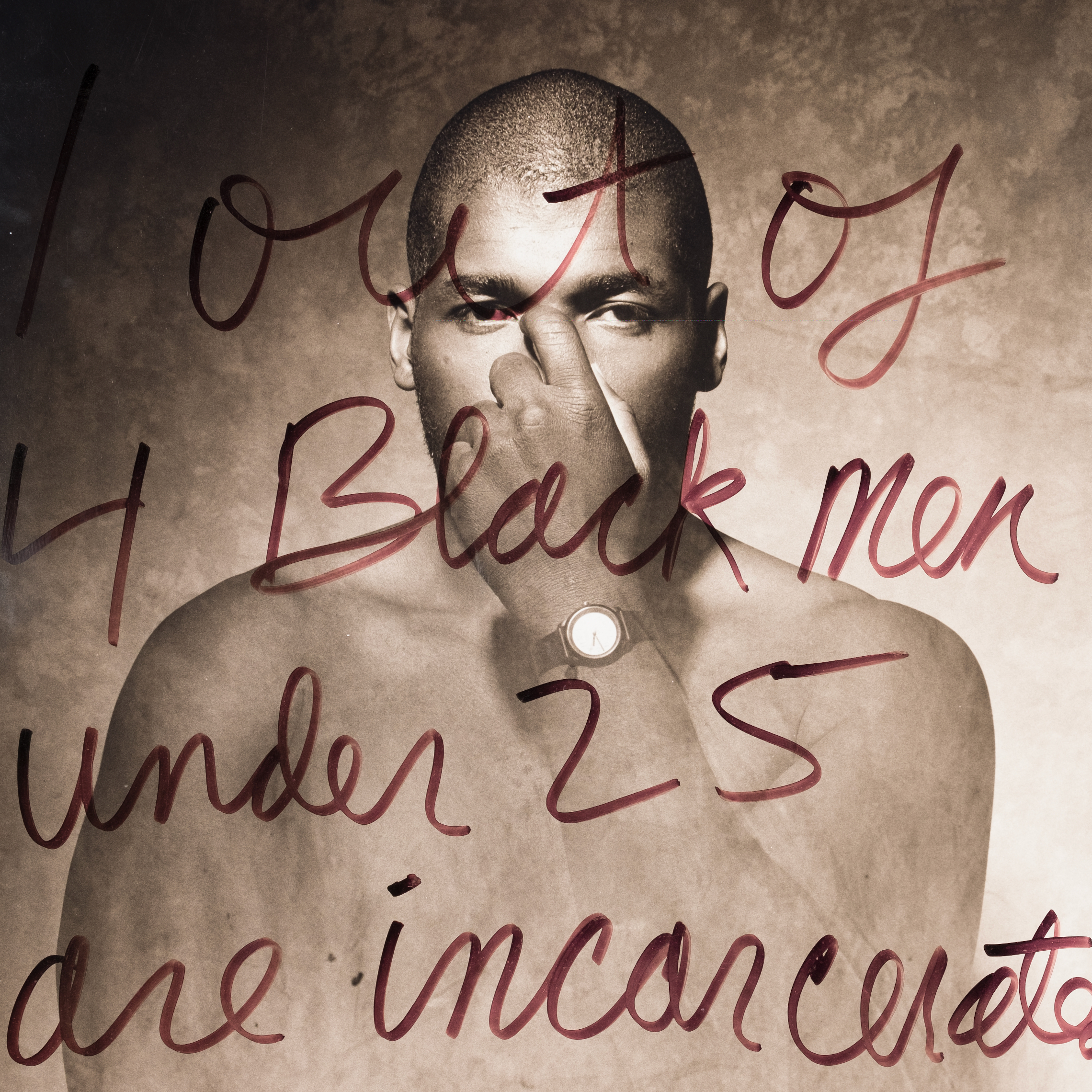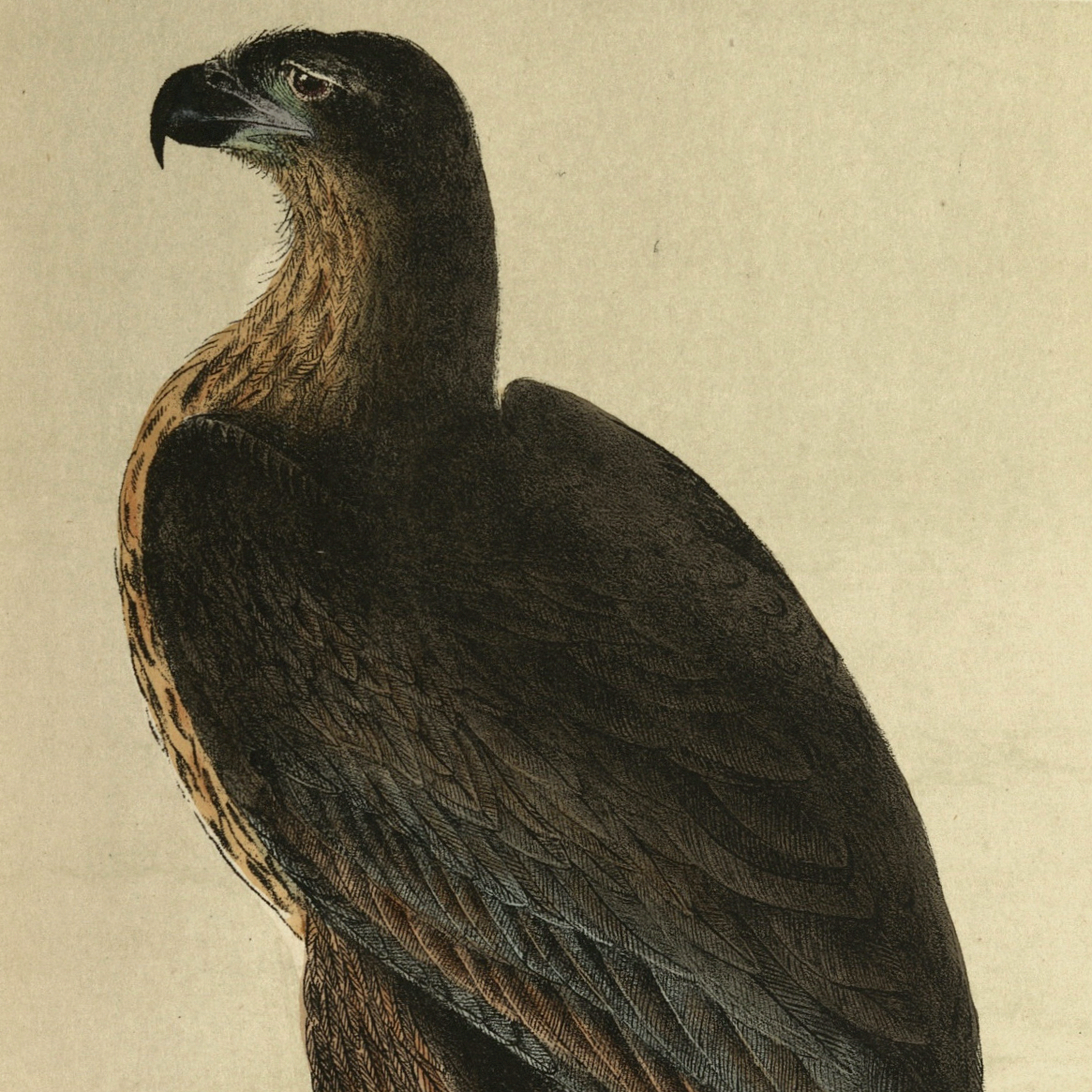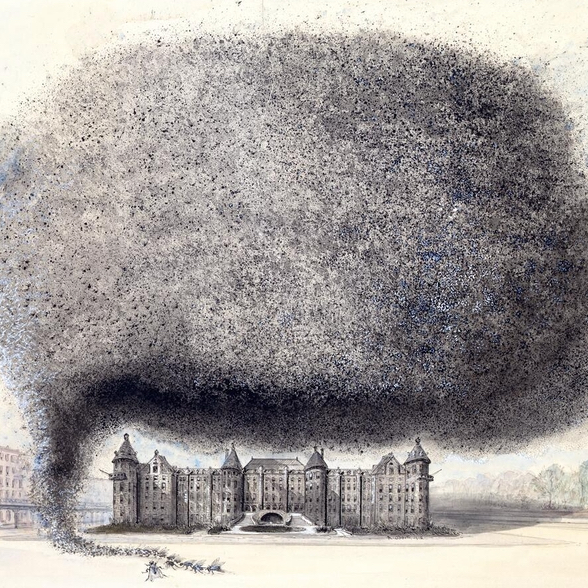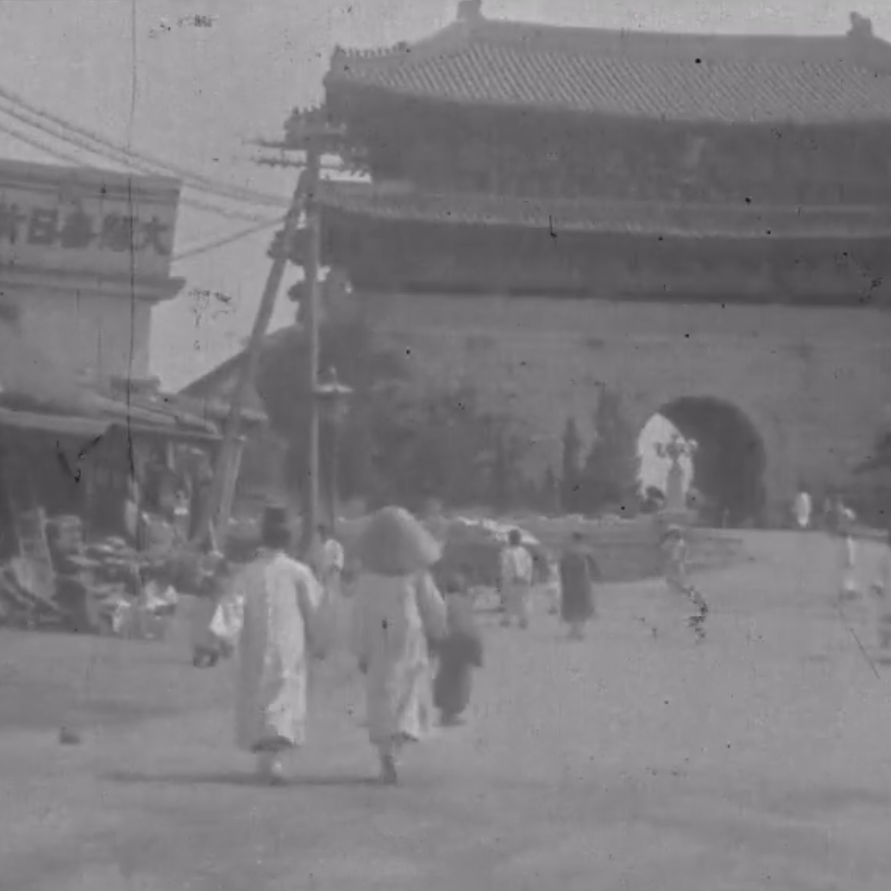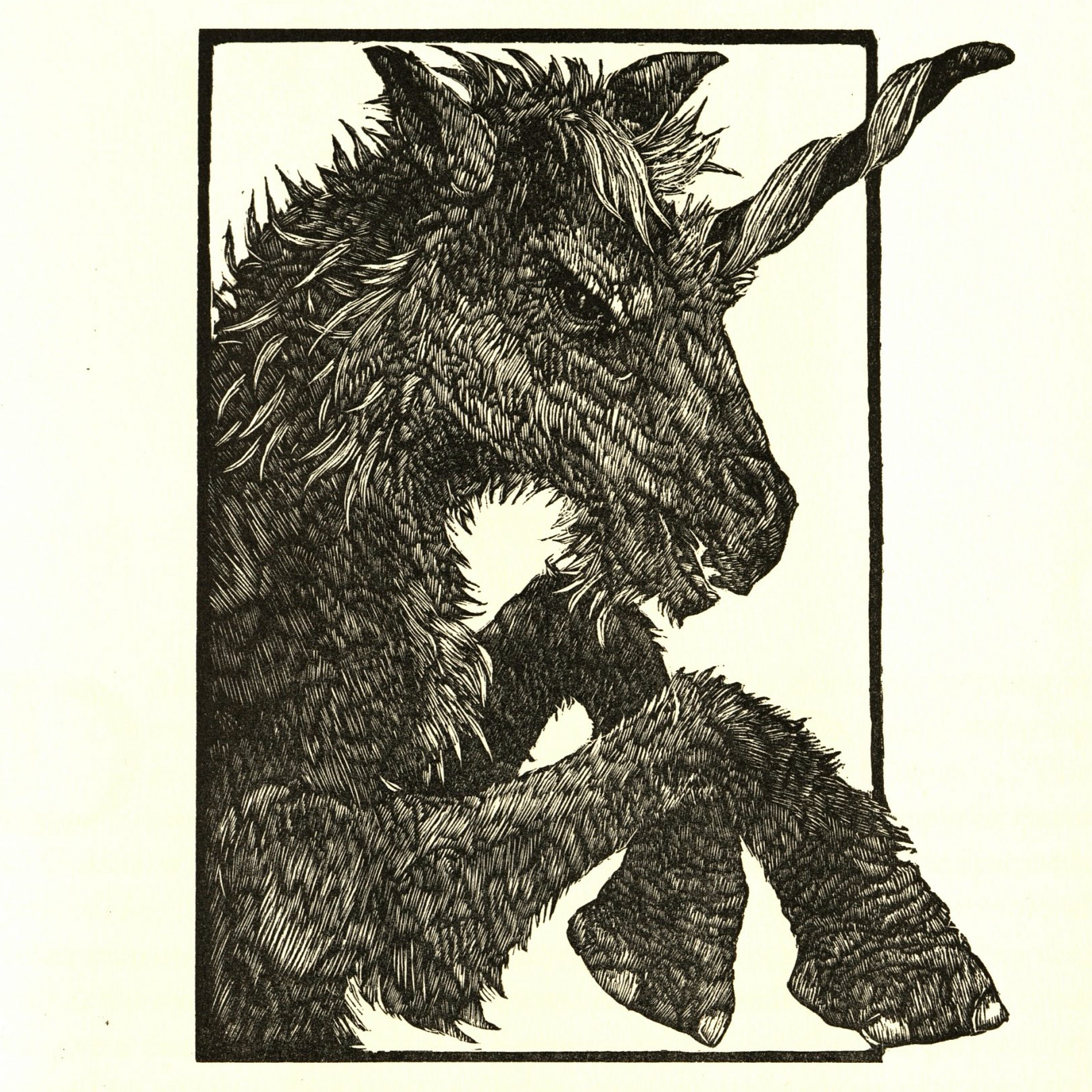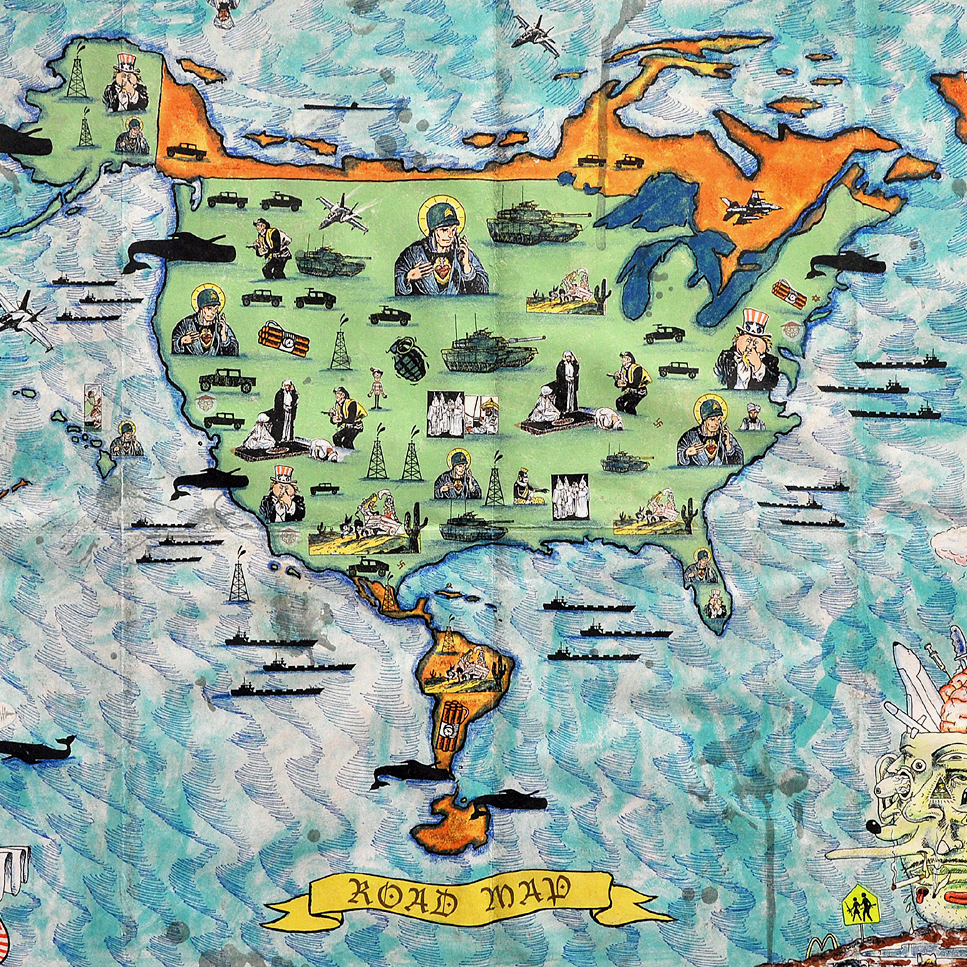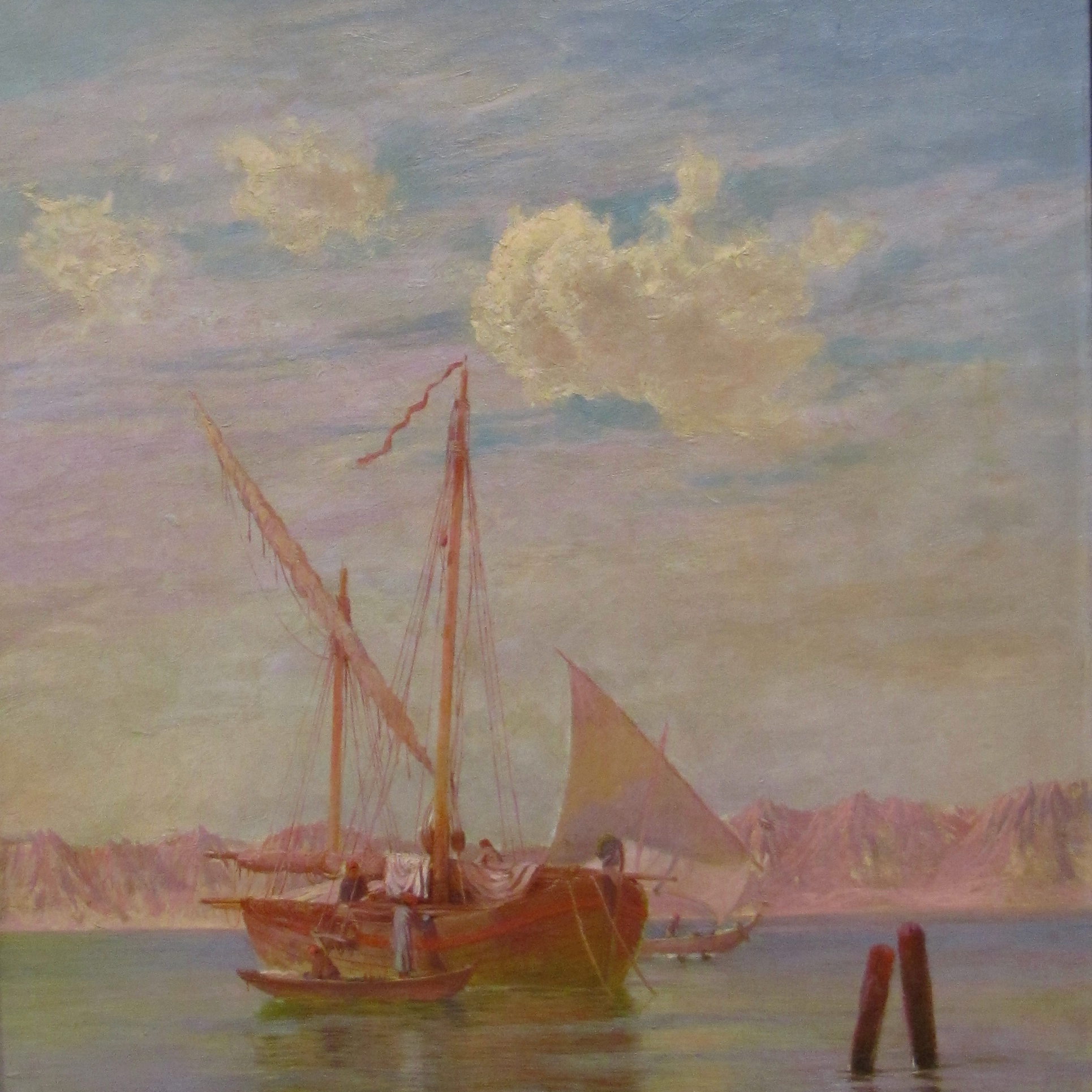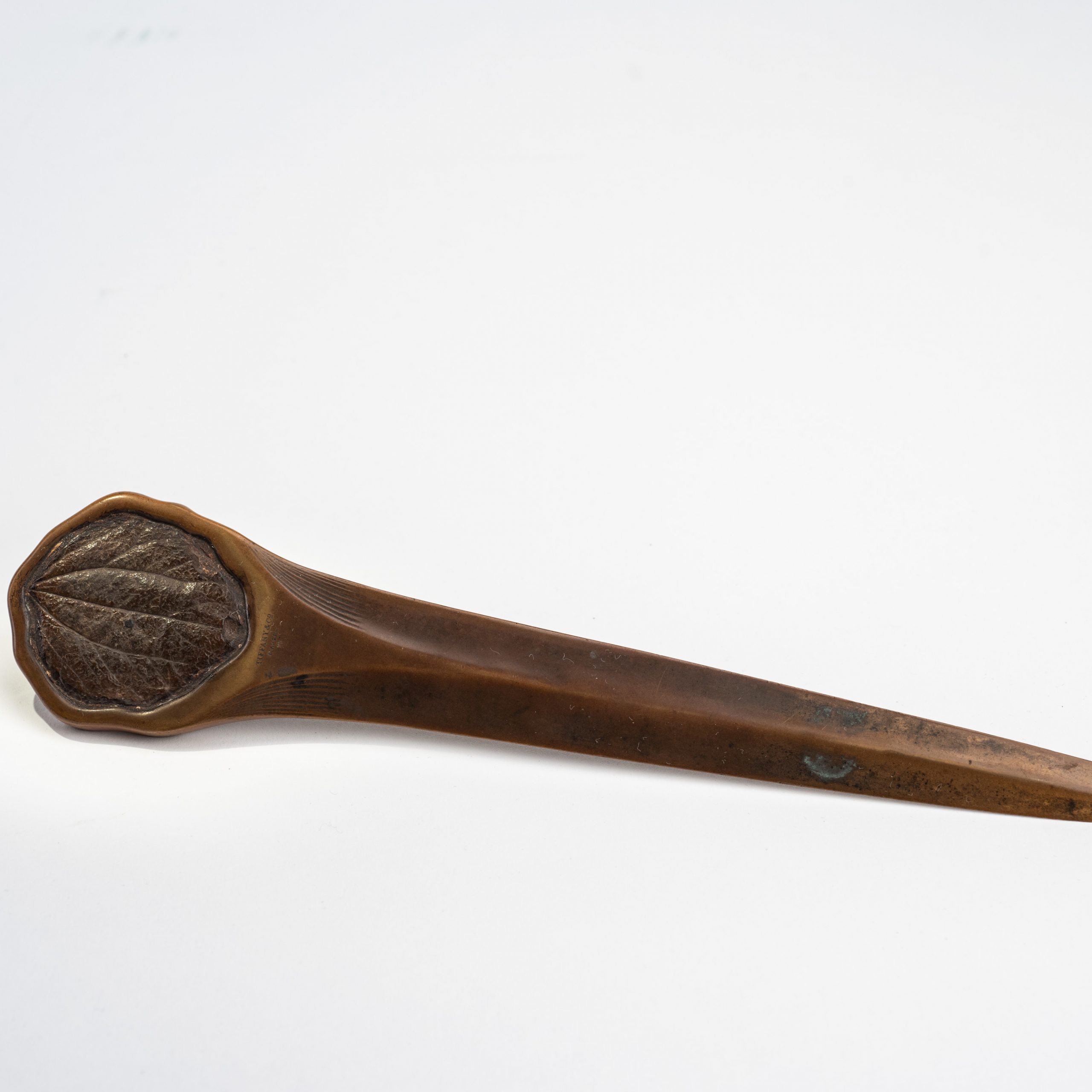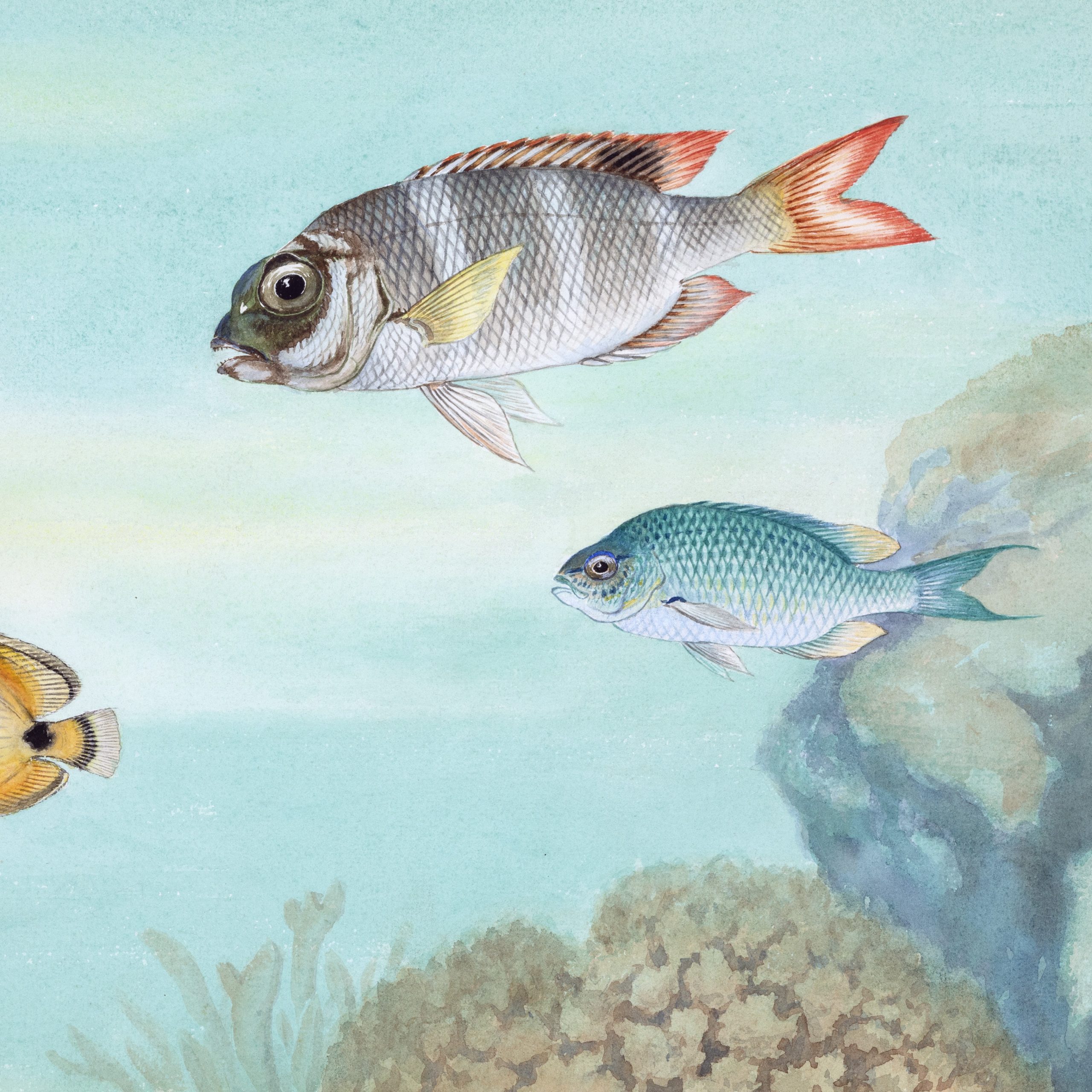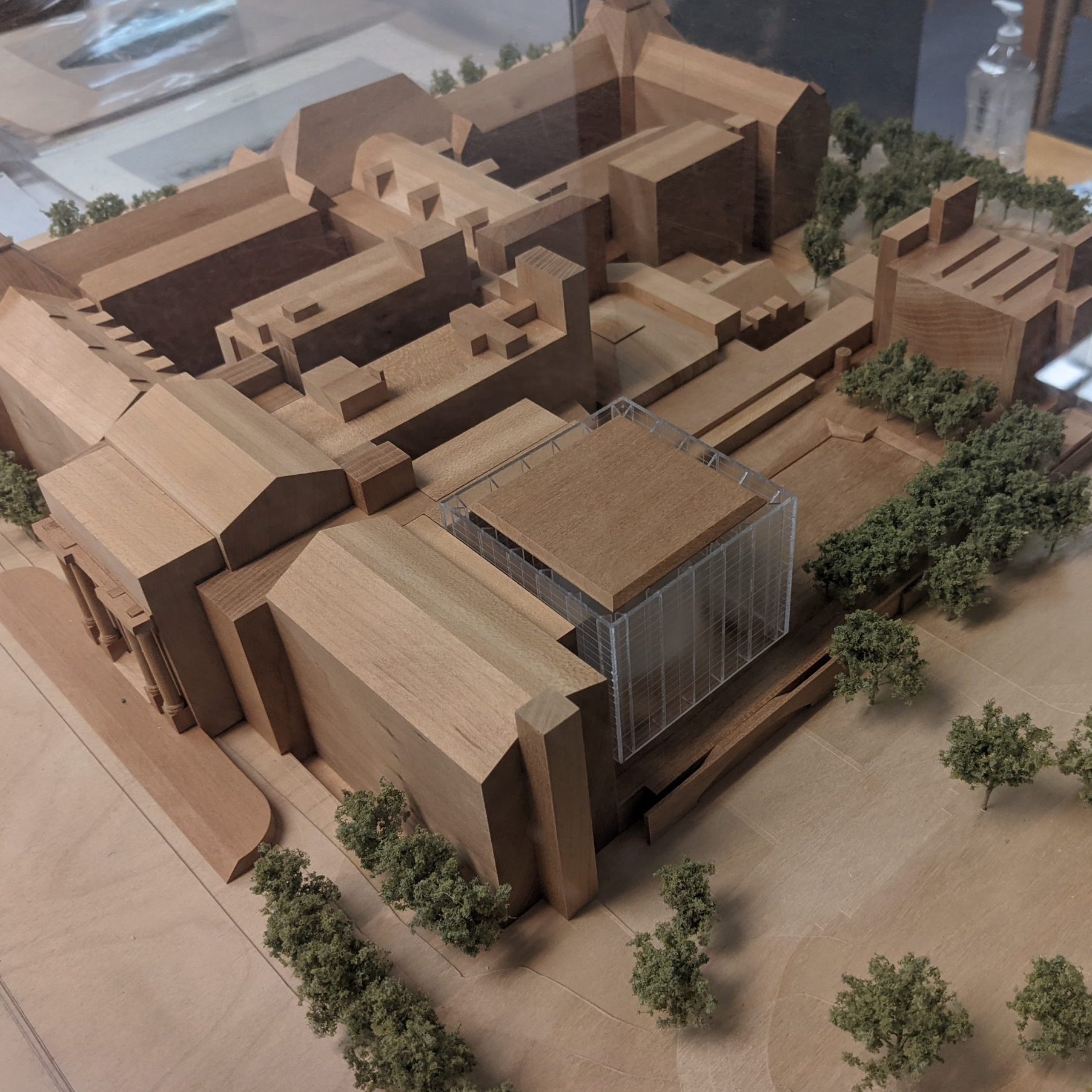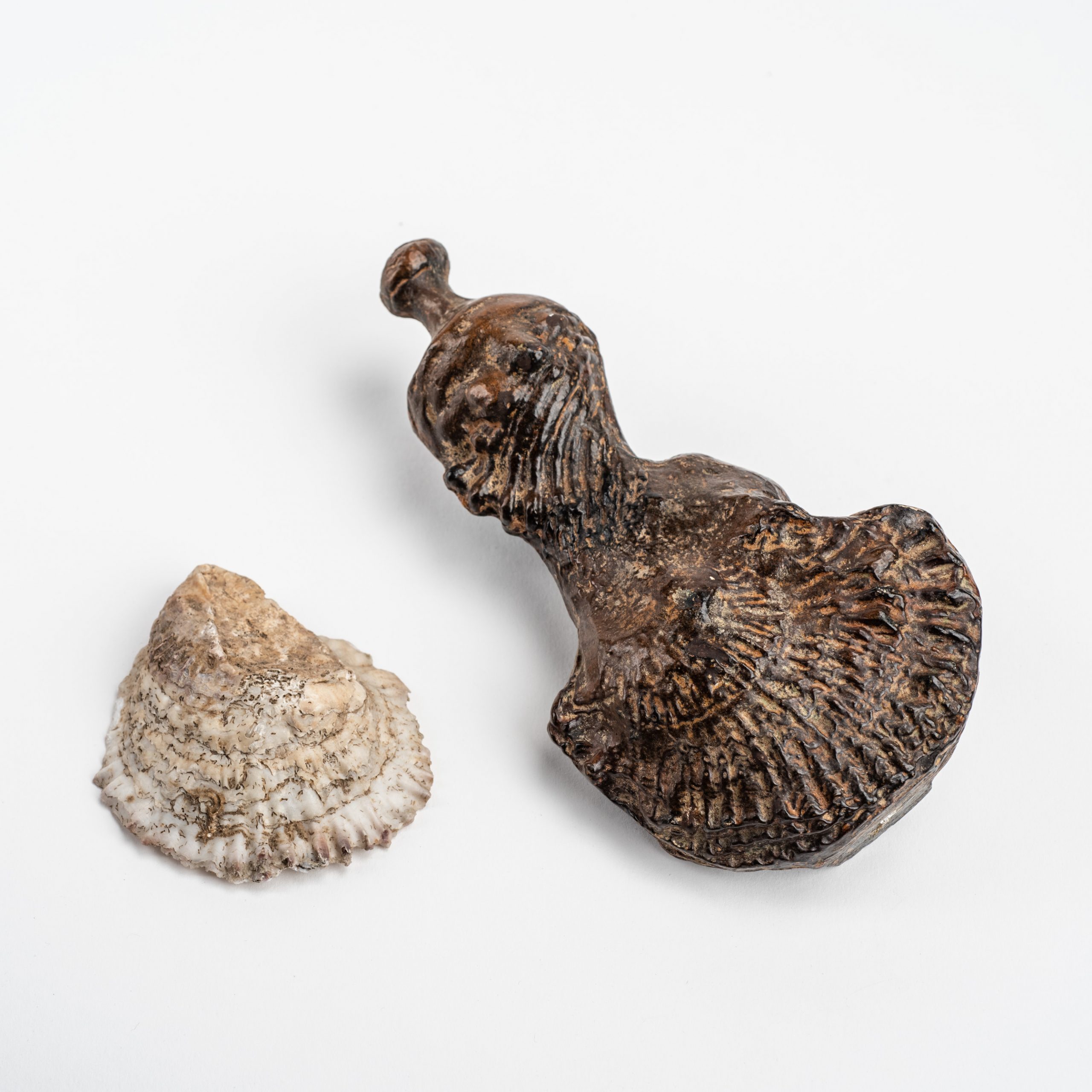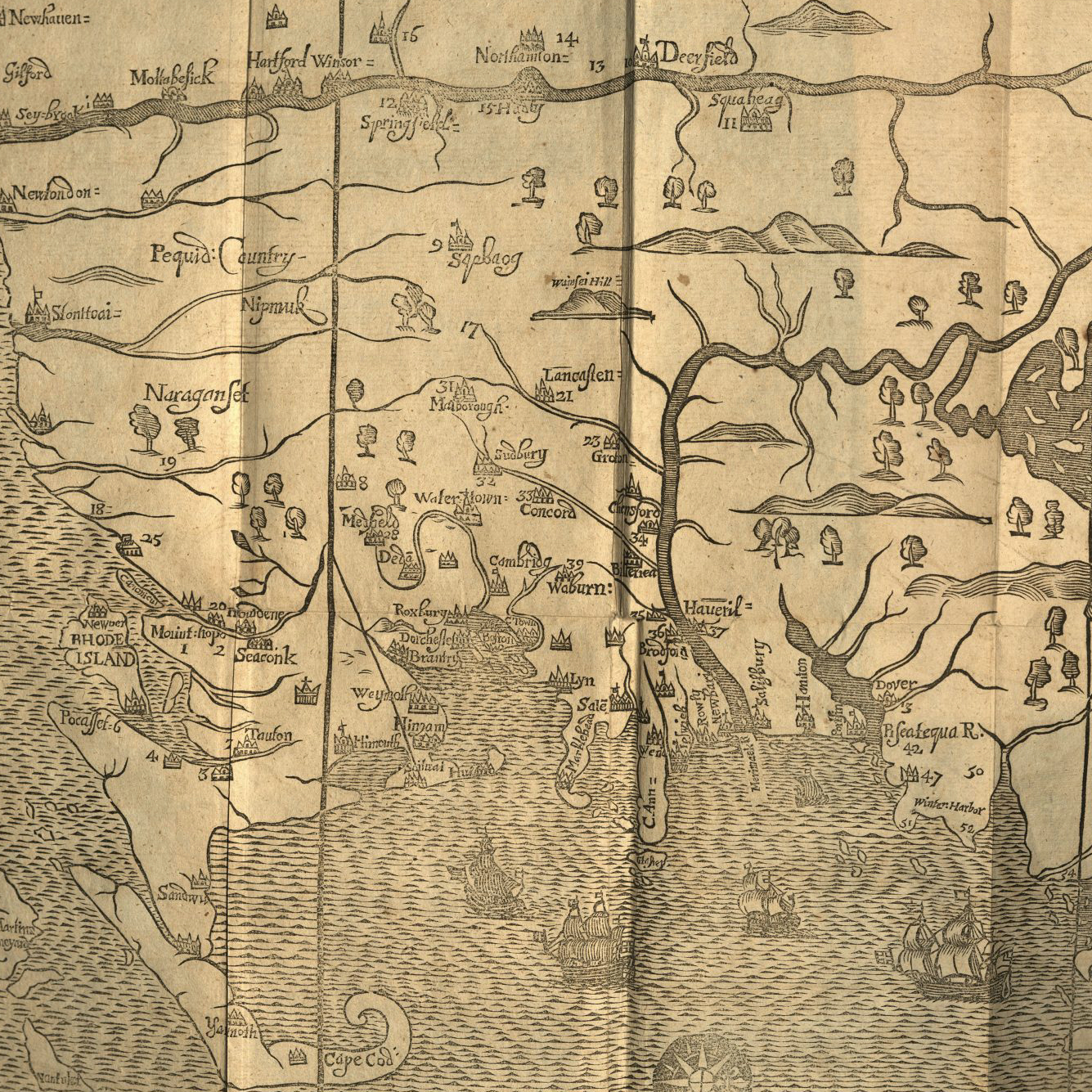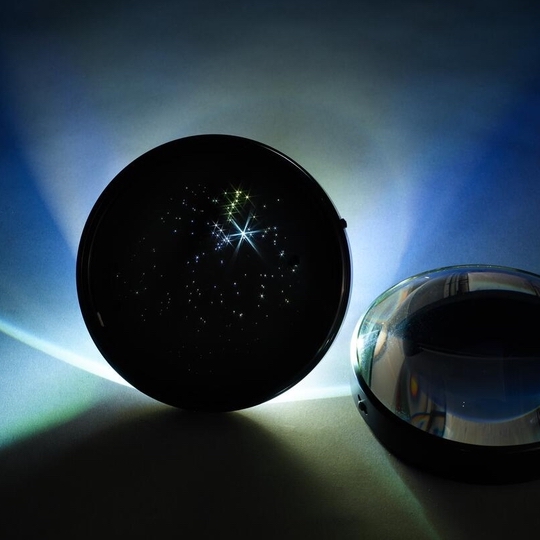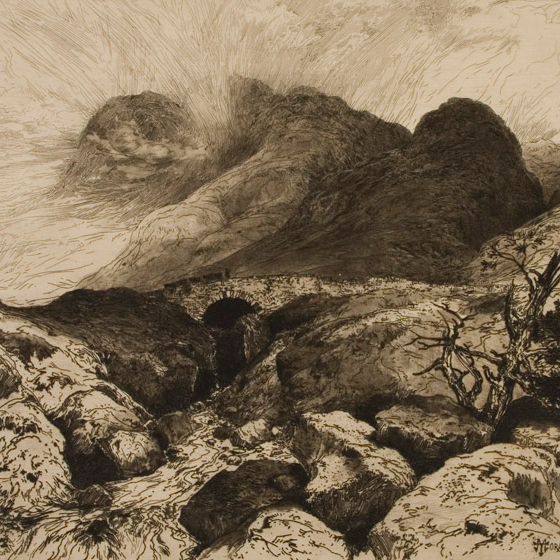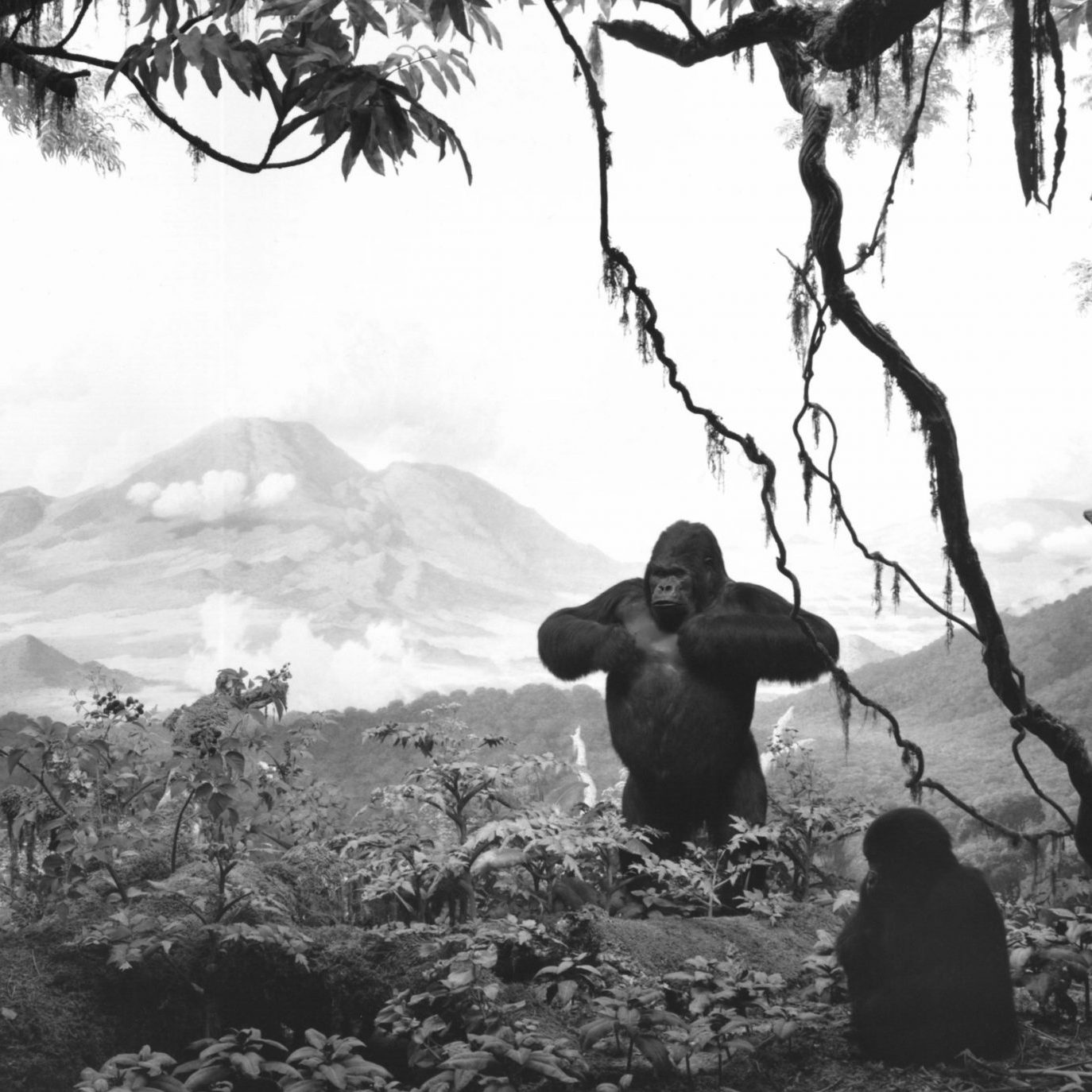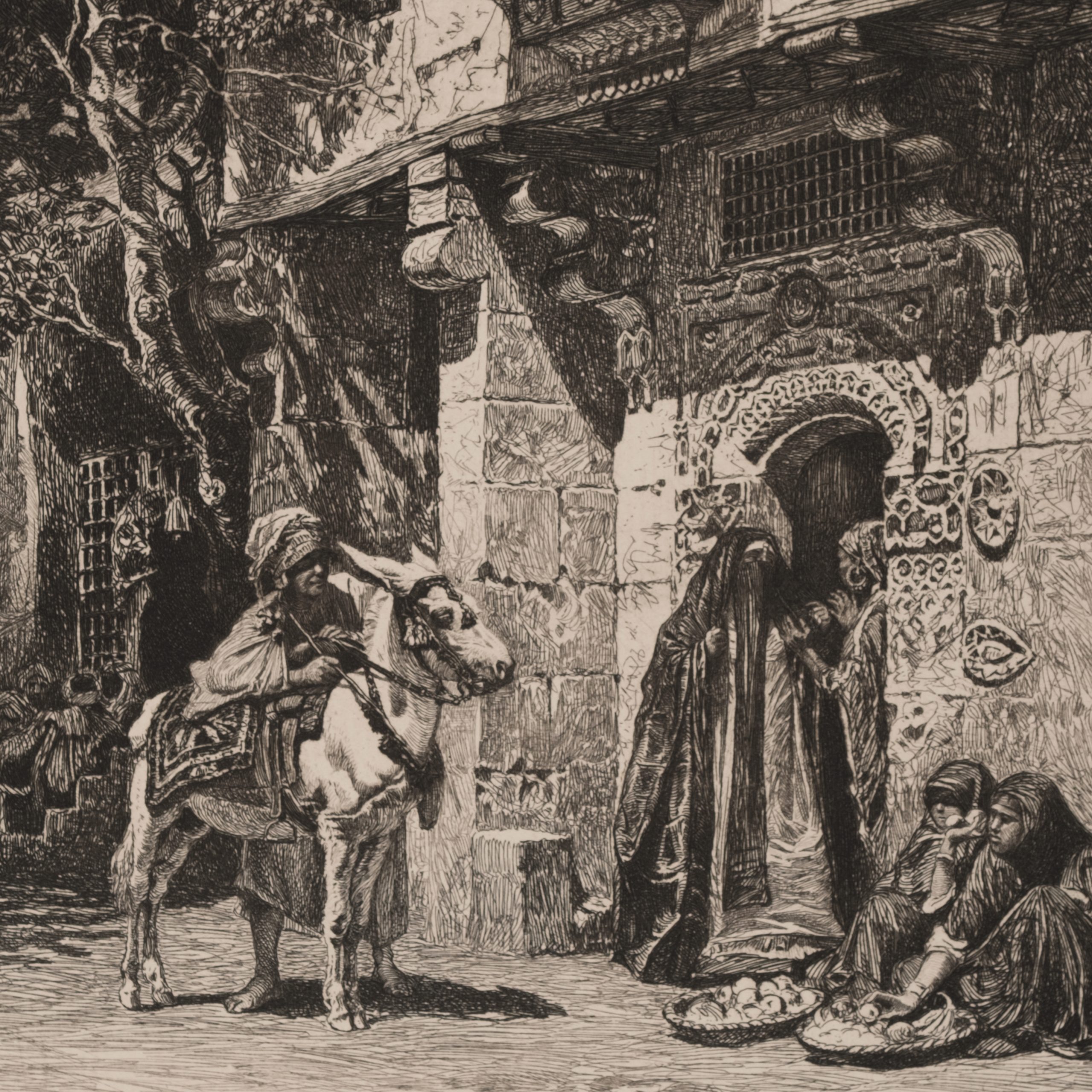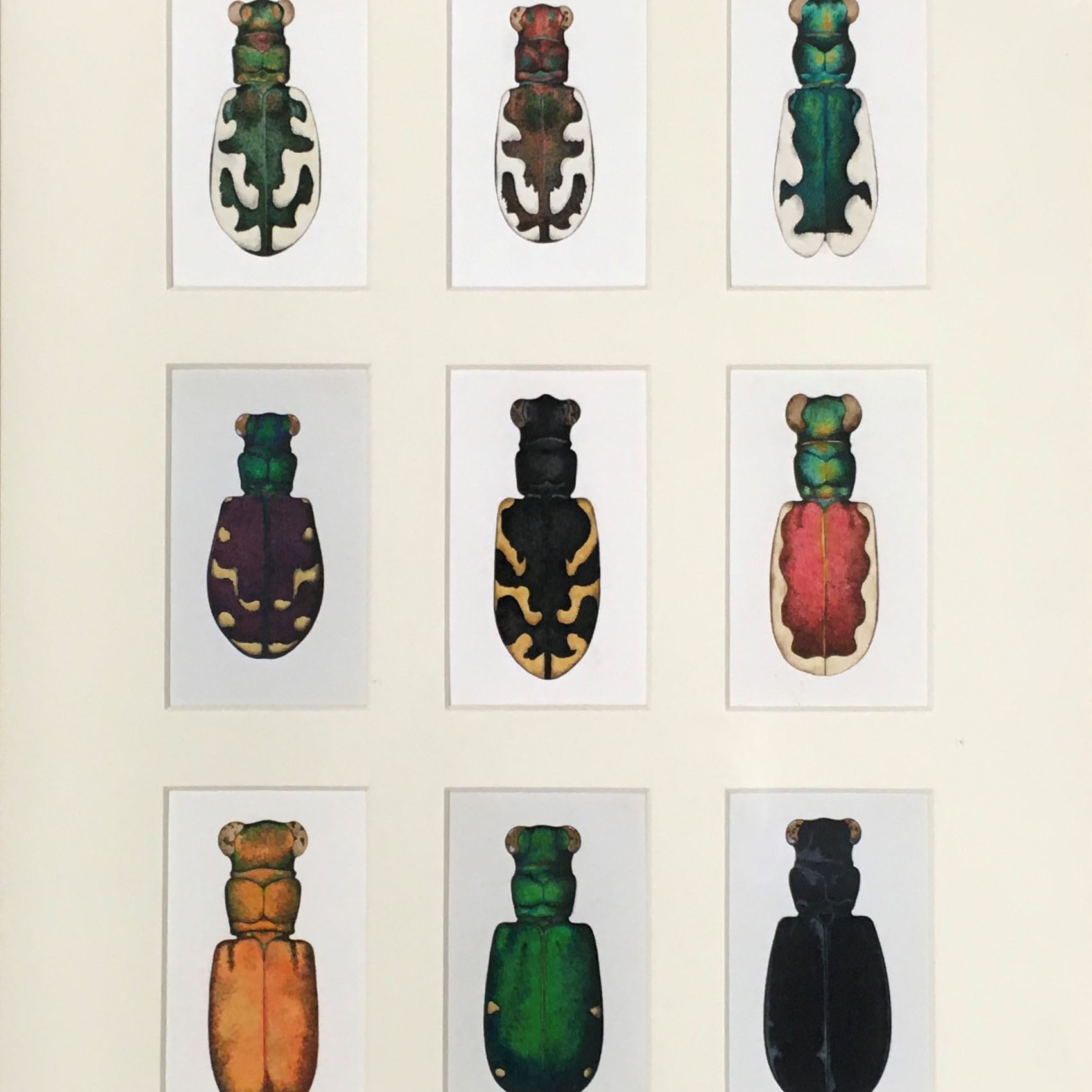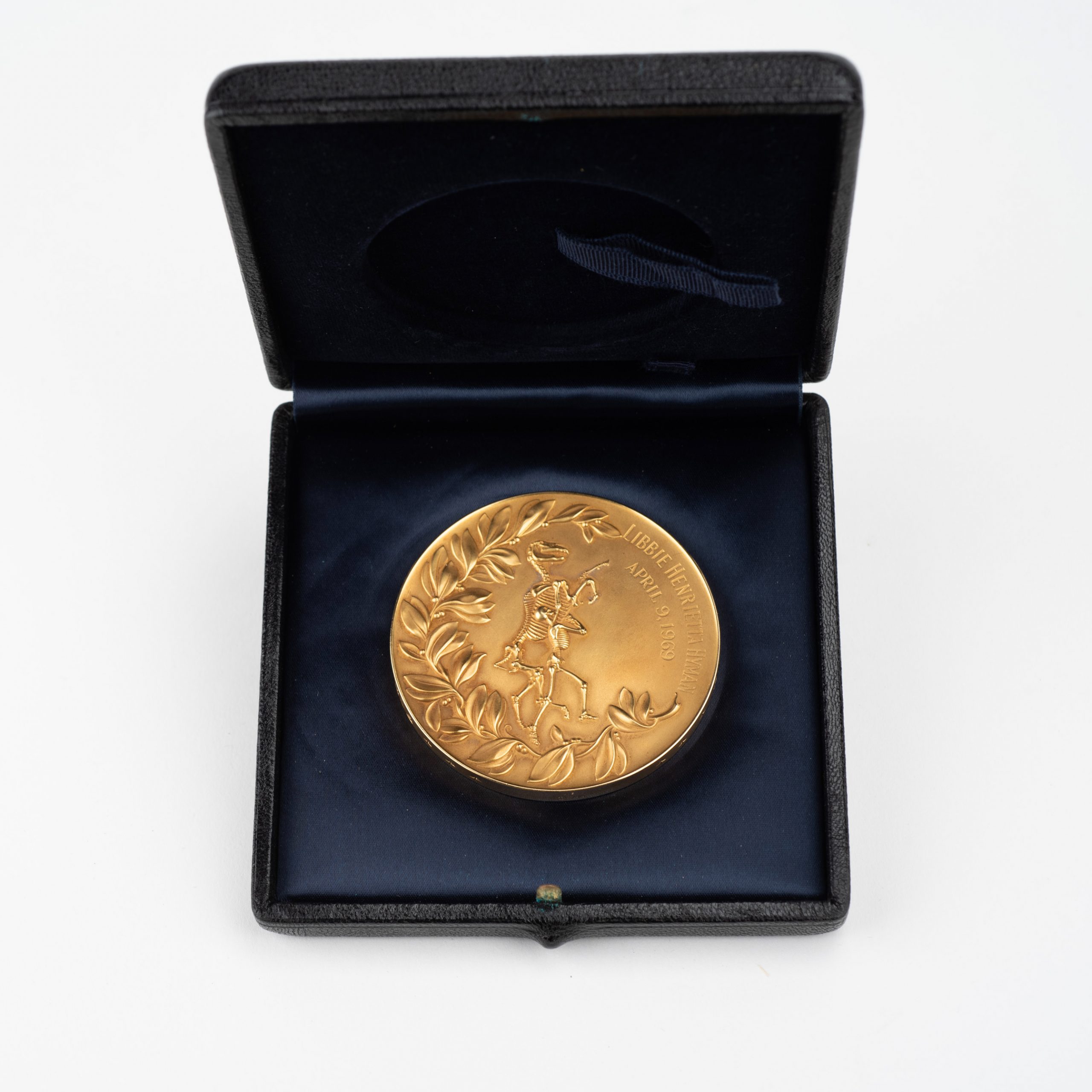A Panel from Red
Michael Nicoll Yahgulanaas
Ink on paper, 2014
(Original created 2009)
19x24"
Inscribed “cutting up Artwork/Why” and a printed cypher and his initials LR
This panel is one part of the larger story that Michael Nicoll Yahgulanaas tells of the Haida, the Indigenous people of the North Pacific Canadian islands of Haida Gwaii, in his 2009 manga, Red. This manga tells the story of a vengeful Haida leader who sets out to retrieve his sister after she has been kidnapped by pirates.
Manga is a Japanese form of storytelling that combines sequential images and text, similar to American comic books, and yet Yahgulanaas’s decision to frame Red as a manga instead of a comic book positions his Indigenous storytelling outside of the constraints of Western literary modes. Putting an additional spin on manga, Yahgulanaas invites readers of Red to tear out the pages of the book and piece them together to create a larger mosaic image. The resulting work is neither a comic book nor a manga, but a story that hearkens back to Indigenous artistic traditions. While qualifying his art as a hybrid practice, Yahgulanaas stresses that, like traditional Haida art, it is an inherently political media. In literal terms, Haida Manga graphically engages with contemporary political issues, particularly those that relate to the land and address environmental and ecological concerns, which resonate not only with the Haida Nation but also with a broader body politic, at regional, national, and global levels.
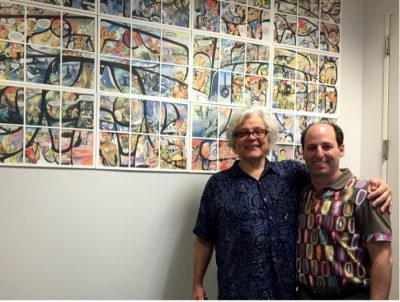 The panel shown above is just one part of this larger tapestry, and on its own, it does not tell the full story of Red. Taking it in isolation raises a different set of questions about fragmentation and storytelling that is central to non-Western literary traditions. Narrative, art, and myth interweave in this panel to create the truth of an experience that has been destroyed and discarded by Western traditions. Yahgulanaas’s work celebrates the process of Indigenous people piecing this truth back together. This print was from a AMNH education event in 2014 where the artist gave a lecture on his Manga pieces. Education staff printed out his book and working with the artist added their own text to the voice bubbles. The text added to this print refers to the fact that the original artwork was cut up into page sections.
The panel shown above is just one part of this larger tapestry, and on its own, it does not tell the full story of Red. Taking it in isolation raises a different set of questions about fragmentation and storytelling that is central to non-Western literary traditions. Narrative, art, and myth interweave in this panel to create the truth of an experience that has been destroyed and discarded by Western traditions. Yahgulanaas’s work celebrates the process of Indigenous people piecing this truth back together. This print was from a AMNH education event in 2014 where the artist gave a lecture on his Manga pieces. Education staff printed out his book and working with the artist added their own text to the voice bubbles. The text added to this print refers to the fact that the original artwork was cut up into page sections.
This image shows Michael Yahgulnaas and Barry Joseph, AMNH Associate Director of Digital Learning, in front of a digital printout of Red in 2014. Michael has participated in many events at the Museum and was a visiting artist-in-residence in 2015.
What place should cultural education have at a natural history museum? How can a museum in New York present the voices and stories of First Nations communities across the continent? What is the history of cultural representation in museums and where do we go from here? These questions were essential in the creation of the newly opened renovated Northwest Coast Hall. Museum staff worked closely with First Nation communities, artists (including Yahgulnaas), elders and scholars in completely reworking the Hall which includes text in the voices of the communities represented. The years of the Northwest Coast Hall’s renovation coincided with a period when US museums and public art came under increasing scrutiny over the racist attitudes they reflected and, in some instances, perpetuated.
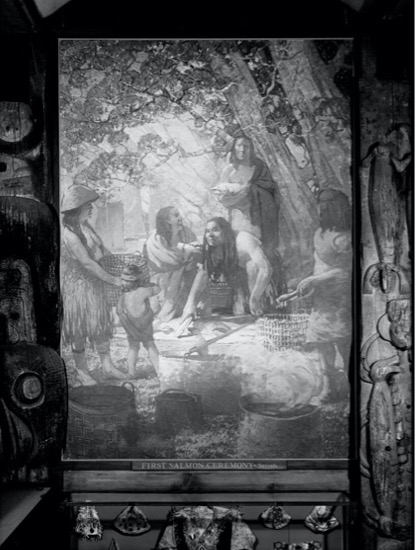
First Salmon Ceremony (1918)
The 18 murals painted by William S. Taylor (1882-1968) for the Hall in the late 1910s were removed or covered over for this renovation as many people felt that they focused too much on exotic or sacred ceremonies and did not accurately depict First Nation communities in the present. Written by Daniel Pfeiffer and Joel Sweimler
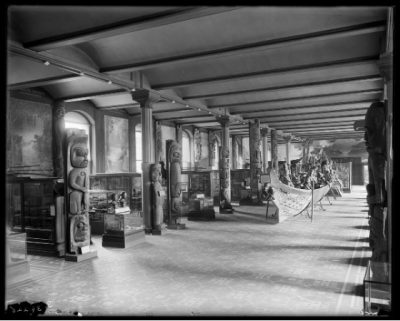
The Hall of Northwest Coast Indians, circa 1918.
Footage of the public mural project at the Northwest Coast Hall organized by Michael Nicoll Yahgulanaas during his 2015 tenure as an artist-in-residency.
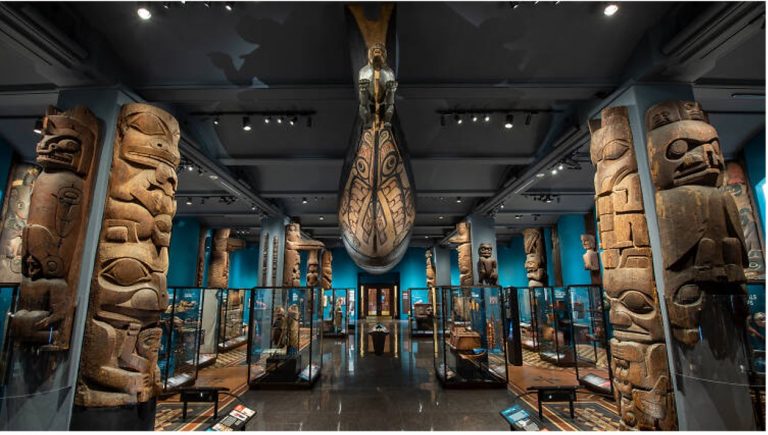
The newly renovated Northwest Coast Hall.
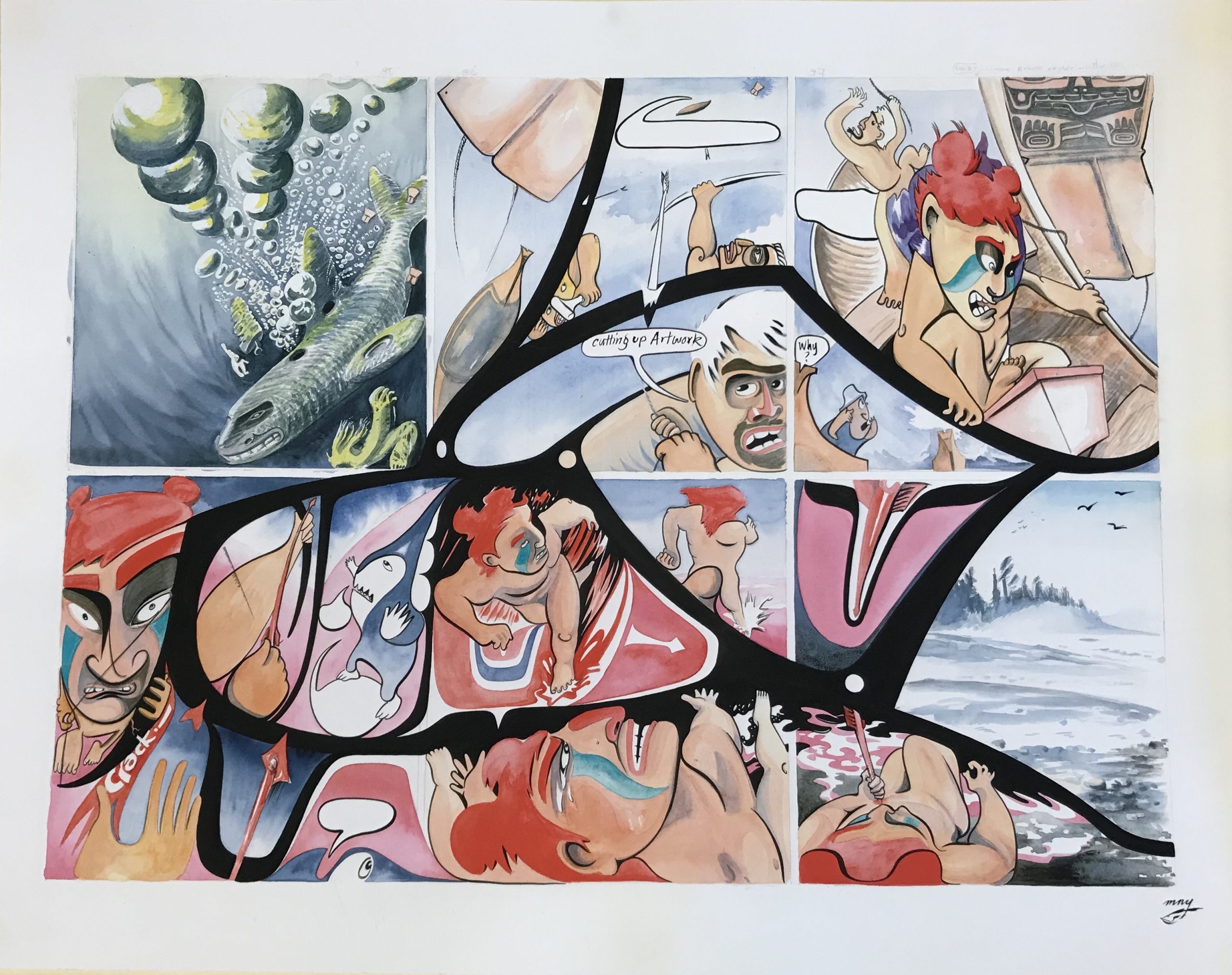
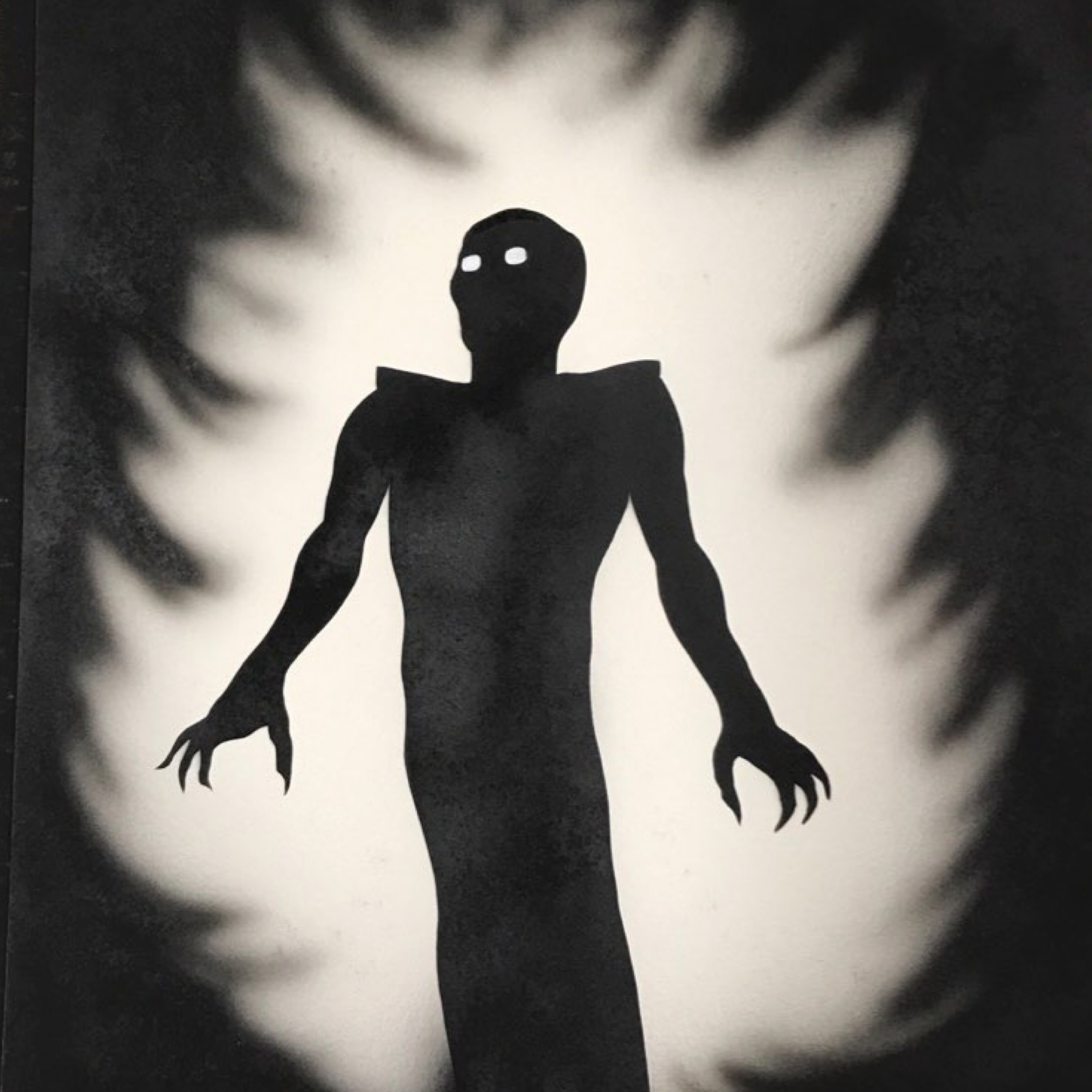
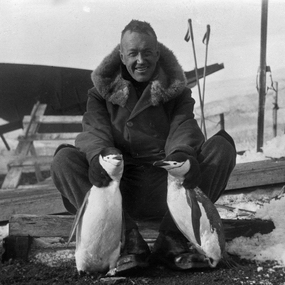
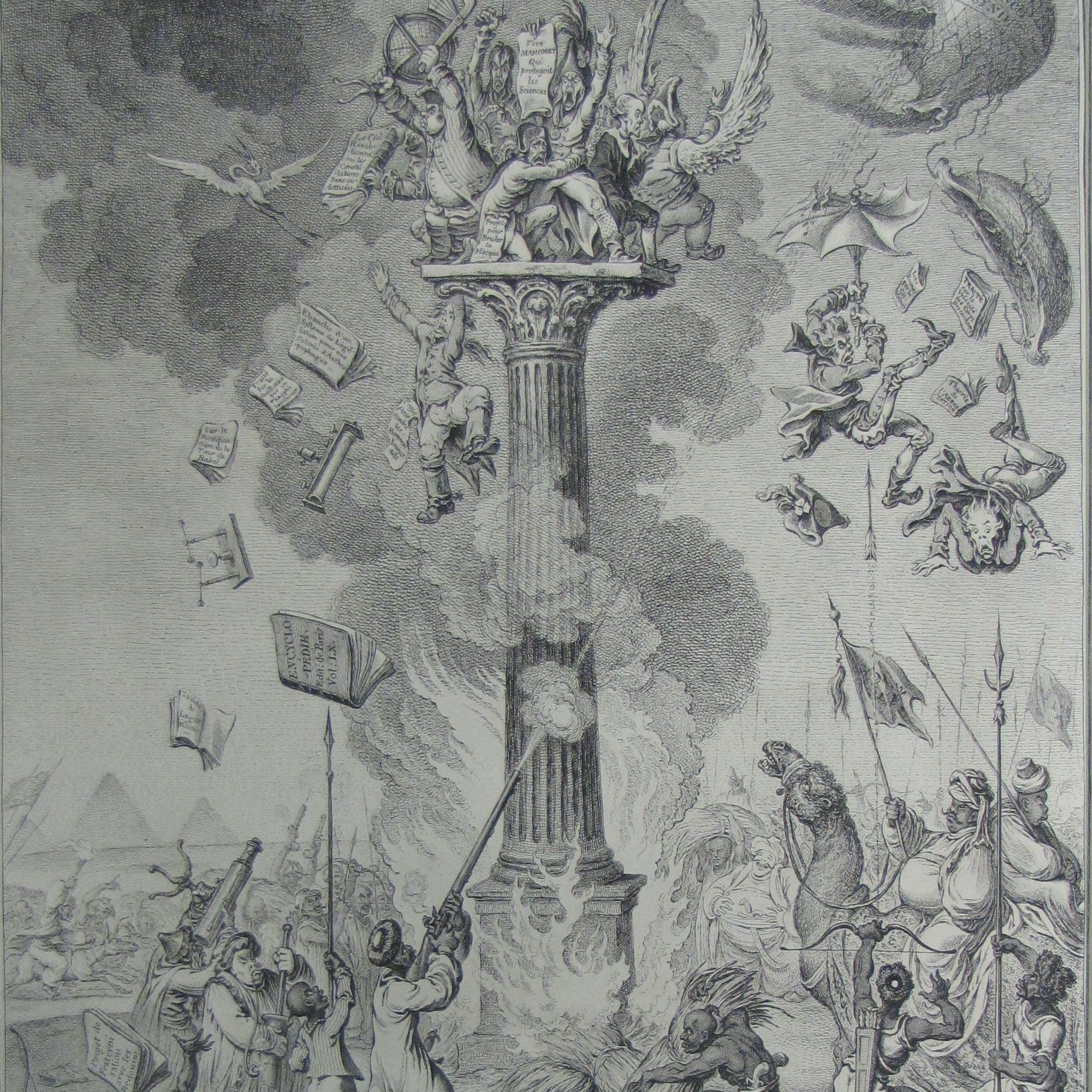
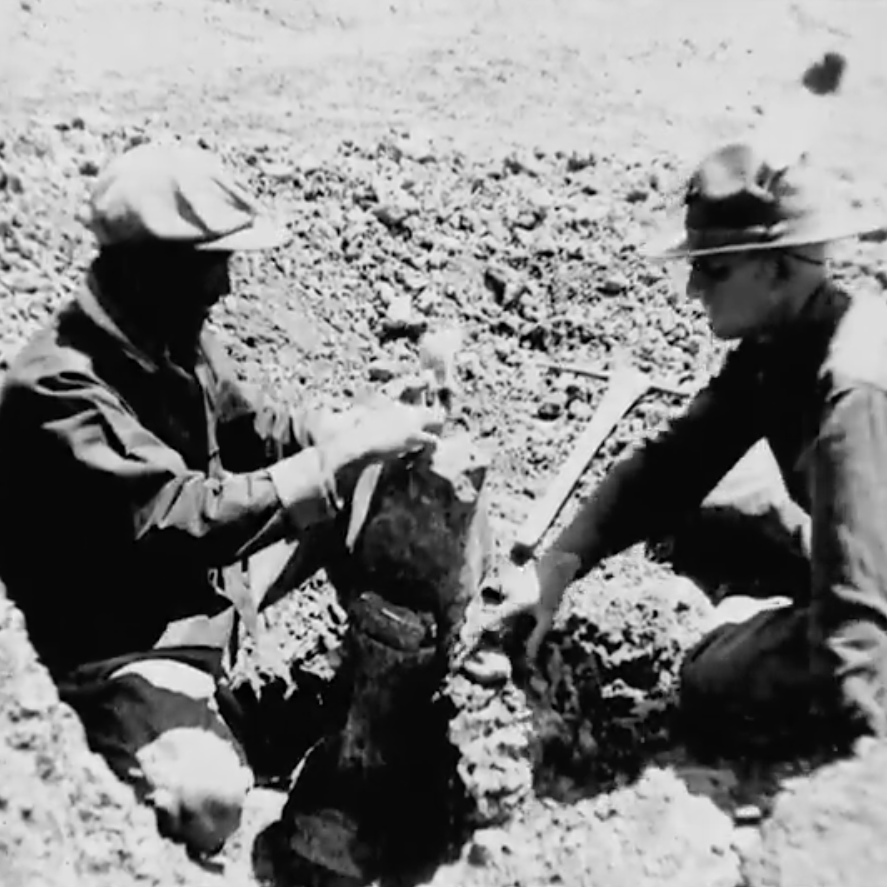
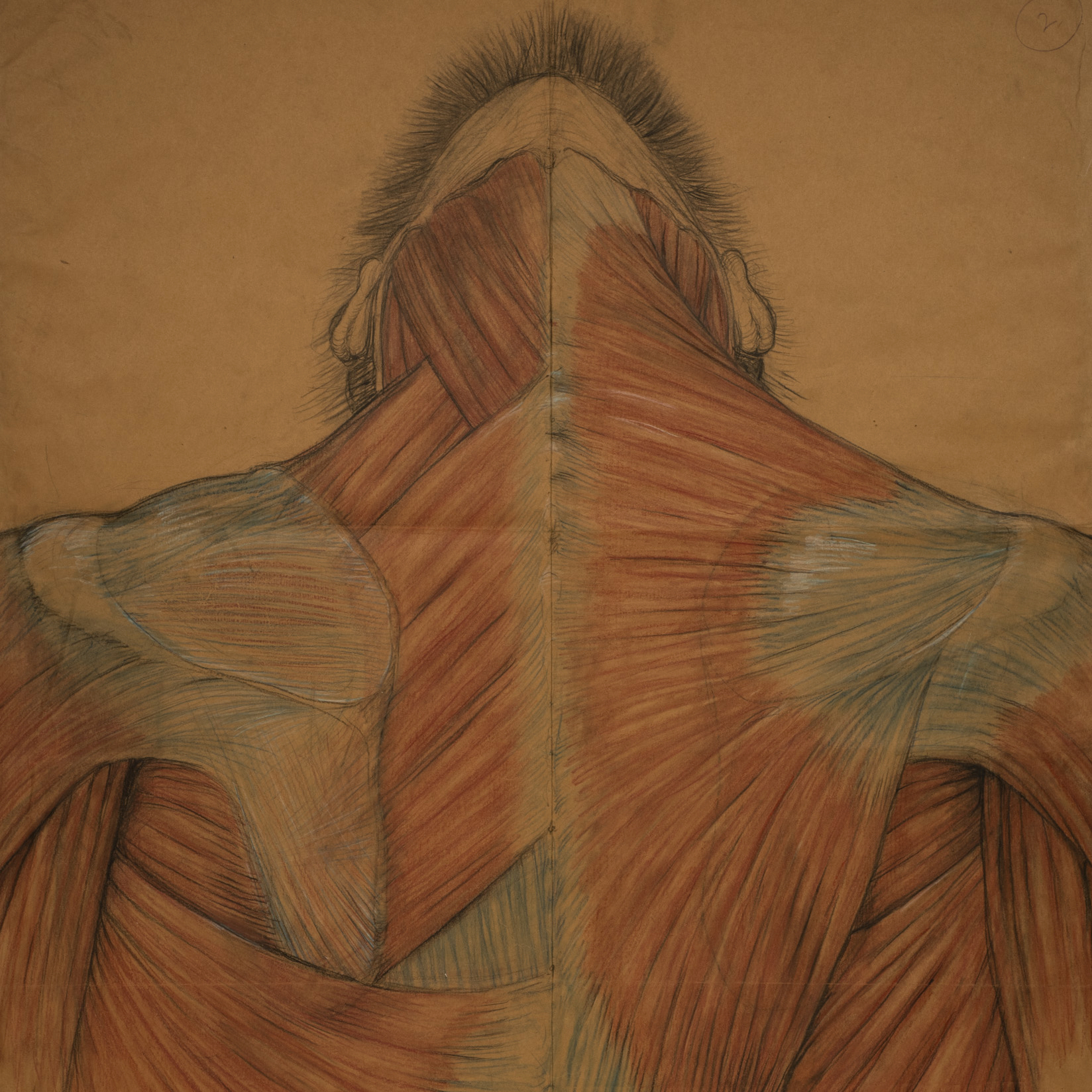

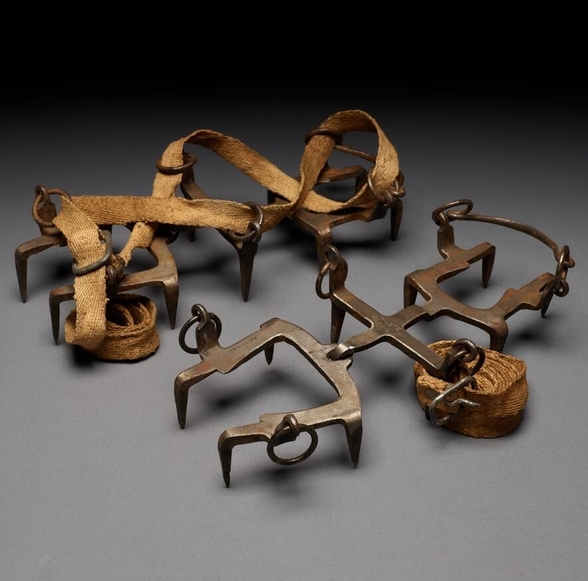
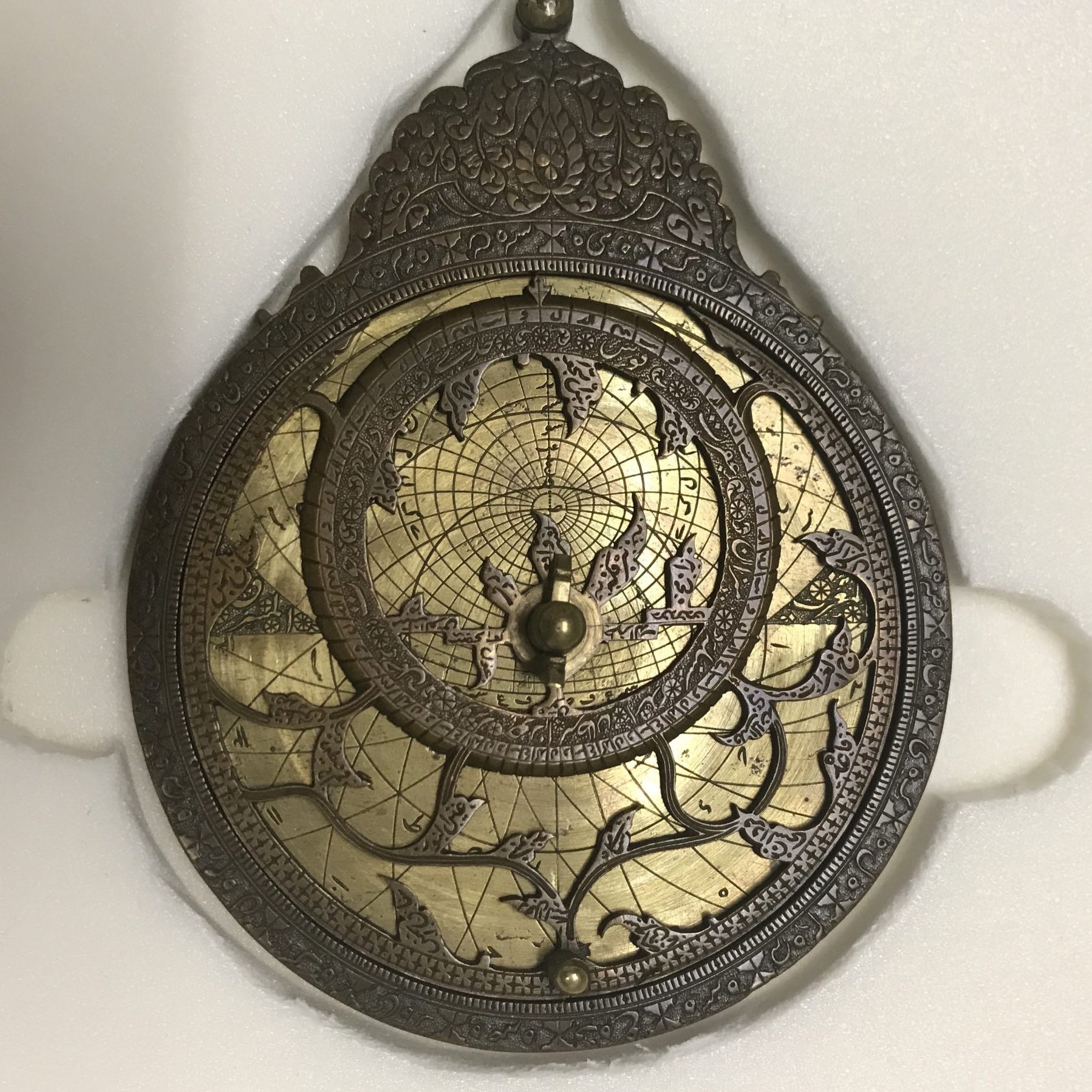
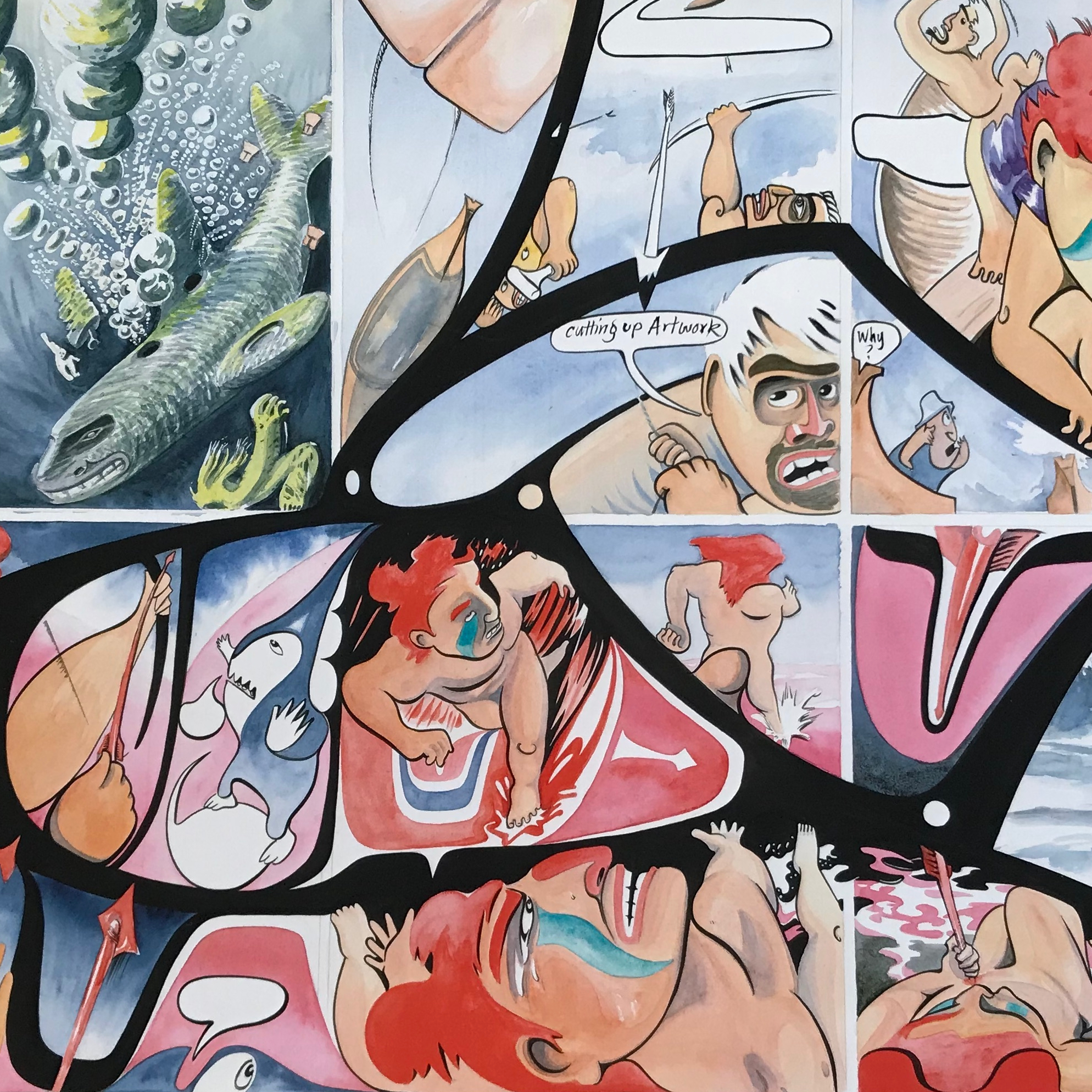
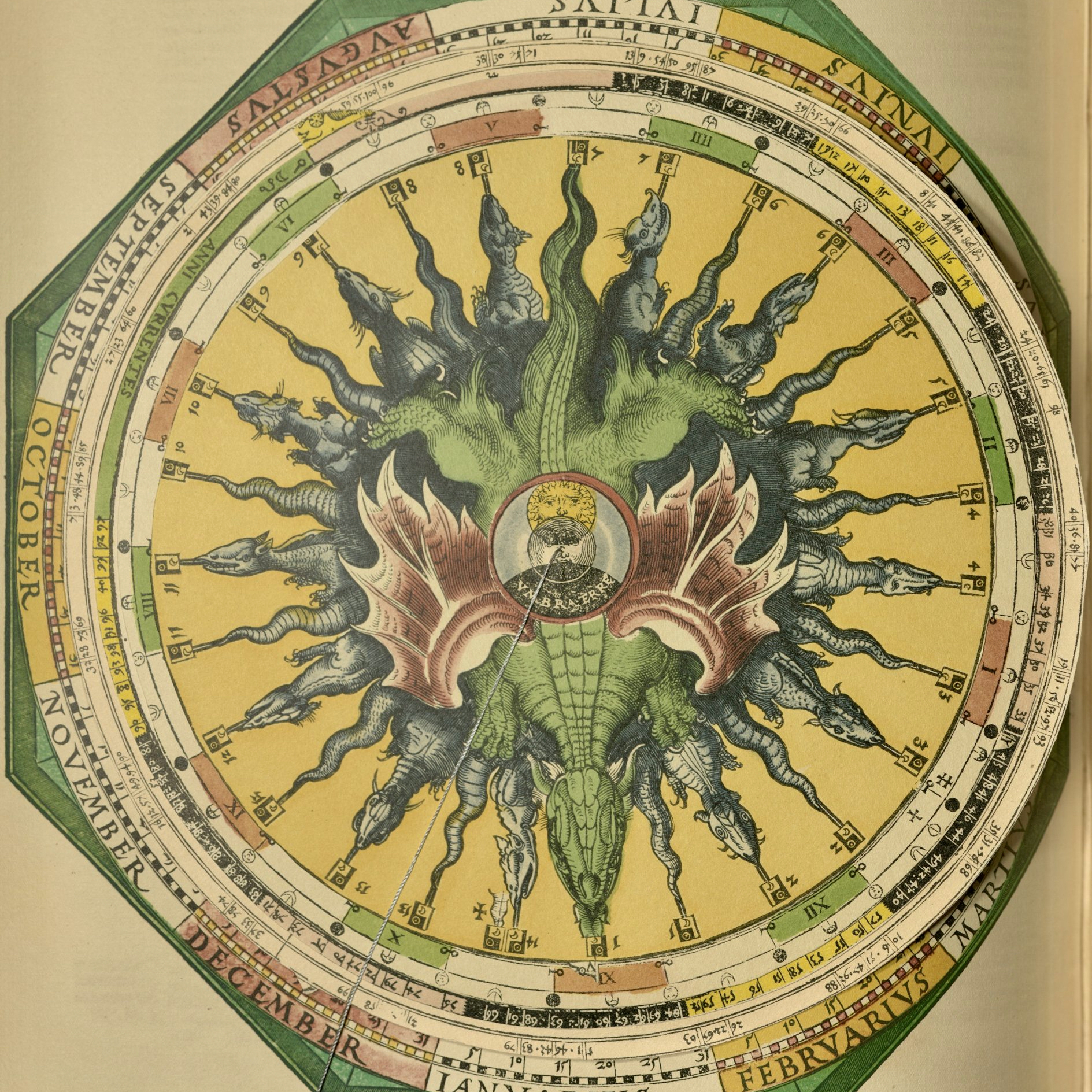
![Howard Russell Butler's [Hydrogen prominences]](https://futureoftruth.media.uconn.edu/wp-content/uploads/sites/2921/2023/01/k6584-square.jpg)
